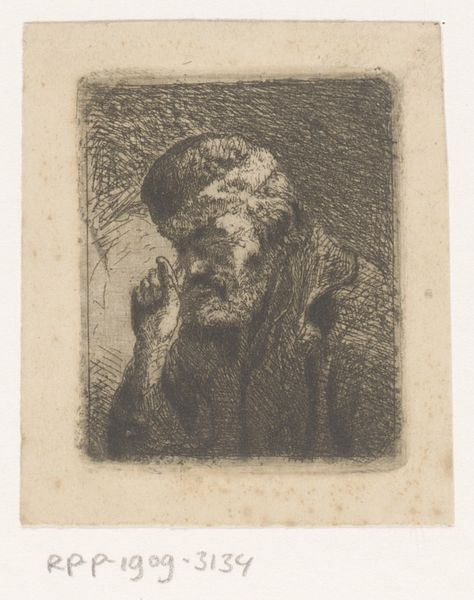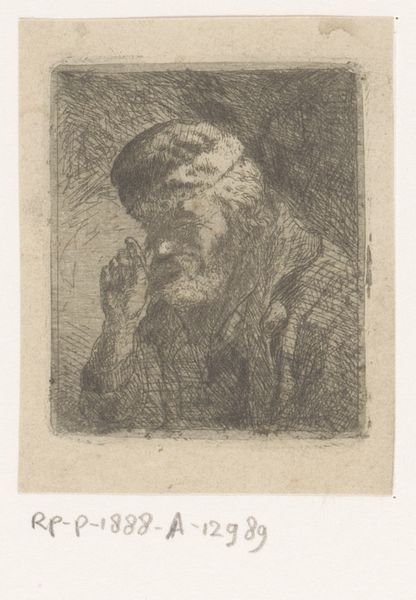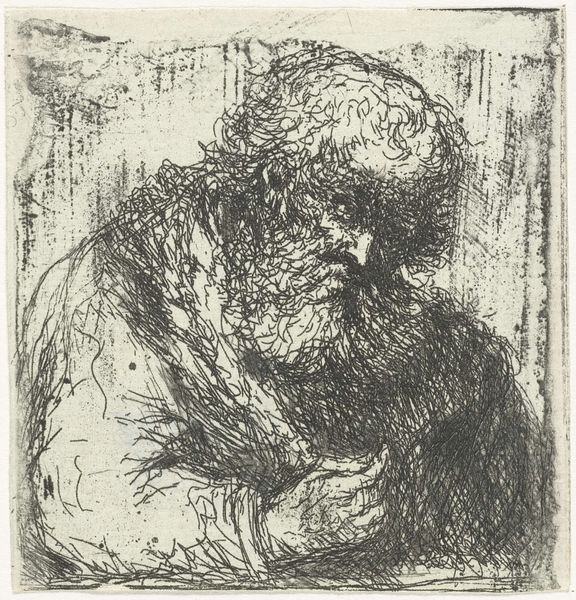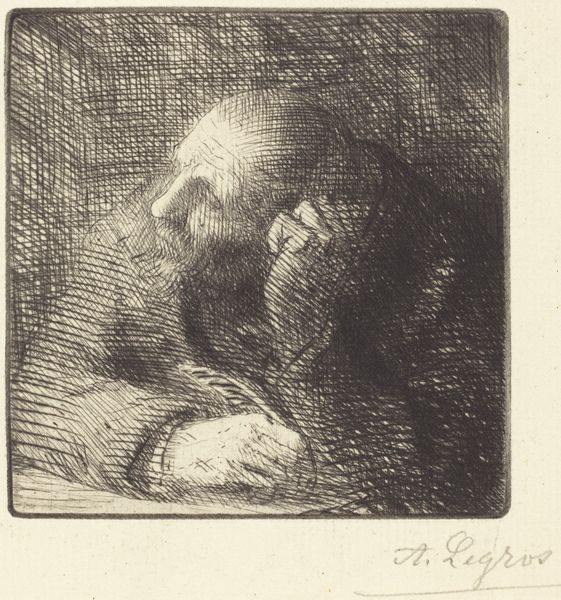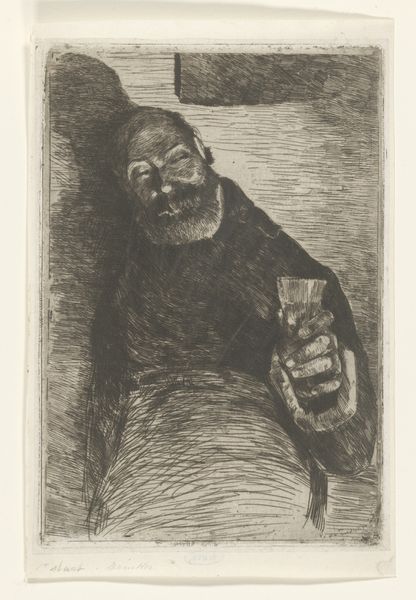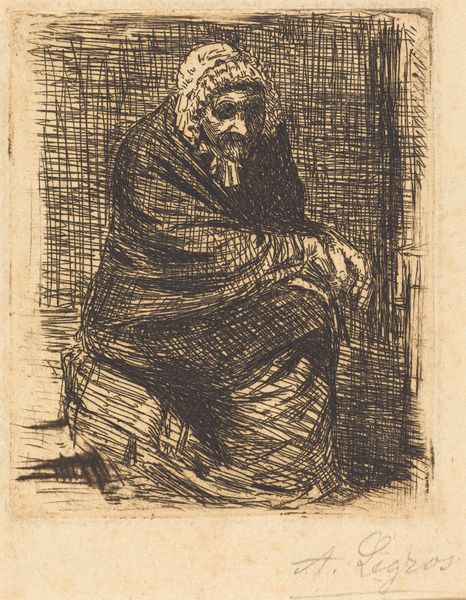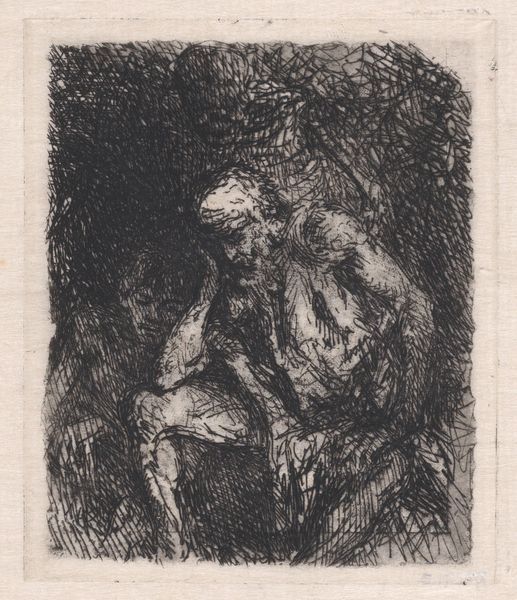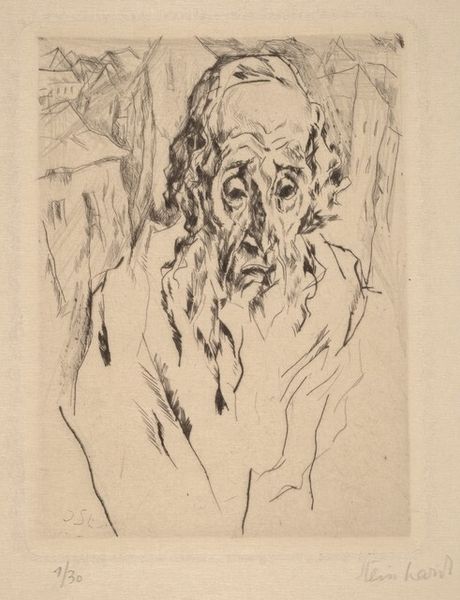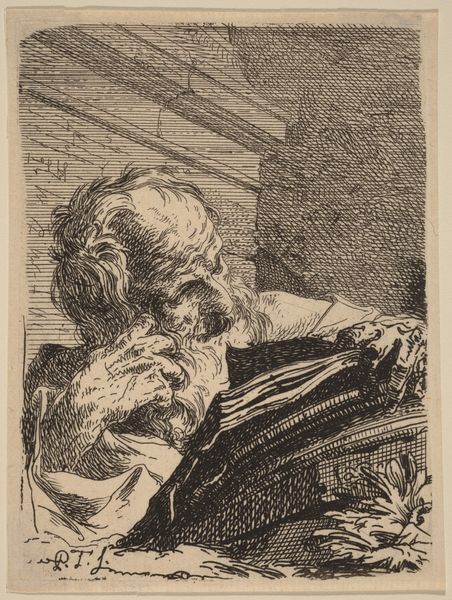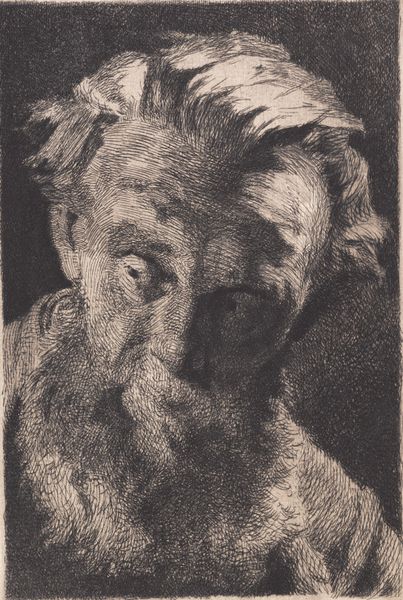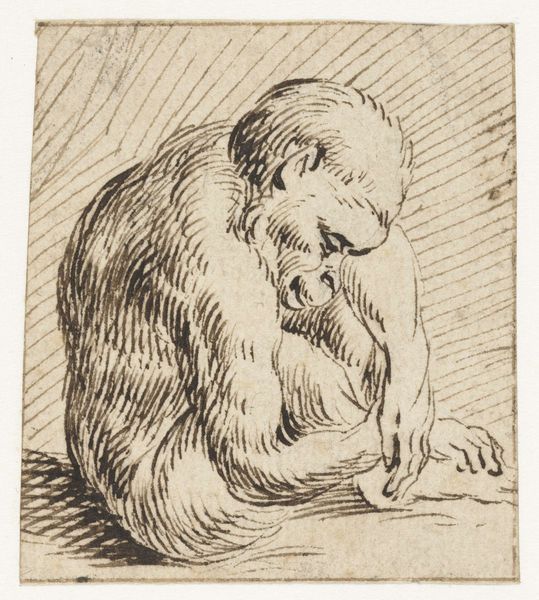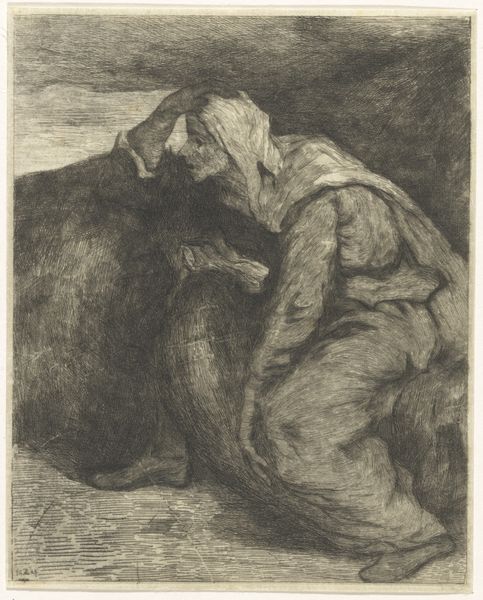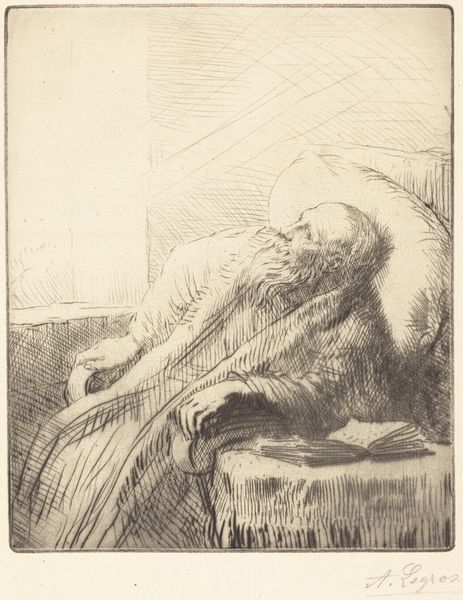
drawing, print, etching
#
portrait
#
pencil drawn
#
drawing
#
baroque
# print
#
etching
#
pencil sketch
#
pencil drawing
#
portrait drawing
Copyright: National Gallery of Art: CC0 1.0
Curator: Alphonse Legros' etching, "Head of an Old Man," or "Etude de tete," presents a compelling study in monochrome. What are your immediate thoughts? Editor: Somber. There's a weight to it, almost oppressive. You feel the subject's age and perhaps hardship. It’s intensely focused on the face. Curator: The power lies significantly in its execution. The artist's technique, the etching itself, is a feat of understated brilliance, notice the cross-hatching, and how the light and shadow define the planes of his face and beard. Editor: It’s remarkable, how that fine line work builds form, creating that rich darkness. You think about the physical act, the repetitive scratching of the plate, the acid baths... that labor adds another layer to the reading, don't you think? What sort of workshop or patron would allow for this kind of skill development? Curator: A salient point. Etching as a process intrinsically connects to repetition, printing, to dissemination of images and, potentially, ideas. But back to the image, structurally speaking. The artist very cleverly leaves the top of the head quite loose in contrast with the starkly dense beard. A decision with great graphic consequences. Editor: Precisely. That loose area allows the eye to rest and contrasts wonderfully with the concentration of the beard and the shadowed eyes. Speaking of eyes, they are mere voids; that accentuates the concealing aspect of the shadows overall. Curator: And emphasizes the internal, reflective world of the sitter, yes? The tonality achieved via the meticulous etching generates this rather poignant aura. I see Legros grappling with notions of temporality, with the aesthetics of decline. Editor: Or the nobility of labor; we see only a weathered face, we feel a life lived. The value isn’t in the appearance but what that appearance signifies: endurance, work, the inescapable reality of physical decline, which is manufactured through intense production methods. It connects this 'high art' to something profoundly human and very 'low'. Curator: An astute connection. Legros masterfully explores that very intersection. The stark lines against the emptiness of the aged surface, those contrasts, generate a formal dialogue—about time, representation, and, as you noted, even class. Editor: It makes you consider the narratives etched onto every human surface. A potent combination of production and visual impact!
Comments
No comments
Be the first to comment and join the conversation on the ultimate creative platform.
